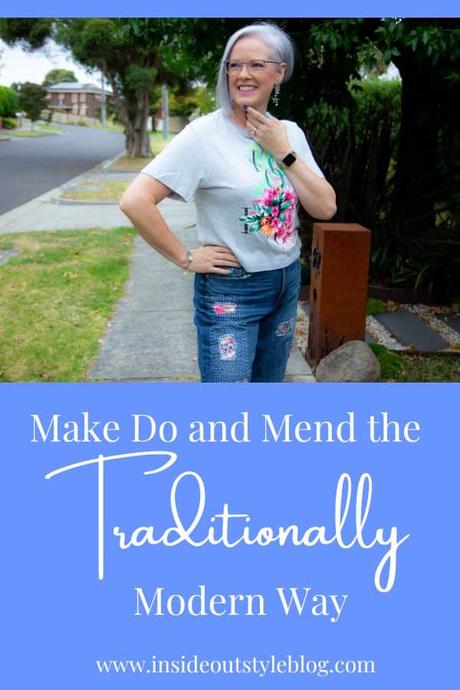Make do and mend was a saying that I heard a lot from my grandmother (who was born in 1903 and lived through two world wars as well as the Great Depression) and even some from my parents who were late 30s babies and their formative years were during the Second World War. The UK Government came up with this slogan with rationing meaning that lots of things were difficult (or impossible) to buy. Women got clever and crafty,making wedding dresses from abandoned parachutes.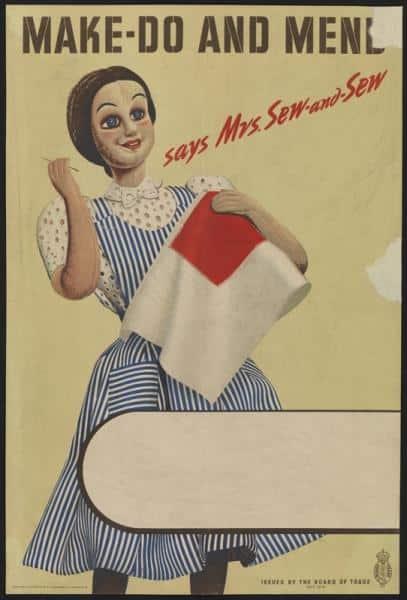
I think there is a small resurgence in this as an idea, as we've started to realise that we are killing our beautiful planet with industrialised making and throwing away. The fashion industry is responsible for around 92 million tons of clothes-related waste each year, which produces half a million tons of microplastics (super bad for the environment). 15% of the fabric used in production is wasted, and 57% of all discarded clothes end up in landfills.
These are some sad and staggering statistics. And I could share more with you about the average number of times an item is worn has decreased by 36%. We are buying more clothes each year (seriously like doubling our buying) yet we wear everything less and more ends up in landfill. Not great.
This is just one reason why defining and developing your personal style is actually something that can improve your sustainability as you don't waste so much buying clothes that don't work. When you have a colour palette that you know works for you, you are not tempted to buy off-palette clothes just because they are cheap or you saw someone else wearing them. You know what doesn't work for you, and that gives you the power to say no to the pushy sales assistant. You've learned that you want to be more discerning and selective in what you buy because you don't want to add to that waste and want to keep your $$$ for the great stuff that you'll love and which will give you more confidence.
Along with buying better, there is a push towards making again, and I know of many women who are dusting off their sewing machines (me included) because they don't like what's available in stores (I started sewing again because I wanted some comfy skirts in colours and patterns I liked, and I couldn't find anything in stores). It wasn't just pandemic lockdowns that got us sewing again (though it gave me more time to do creative things).
I spent some of my Christmas holiday's binge watching The Great British Sewing Bee in each episode there is a Transformation Challenge and in one of the season 8 episodes the contestants were asked to repair and transform ripped denim garments with the Japanese traditional mending methods of Boro and Sashiko, and I think I fell in love with the idea (just a little bit).
I started looking into these traditional ways of fixing things that are a bit broken (just like the Japanese also mend crockery with Kintsugi, where the belief is that the repaired item is both stronger and more beautiful than the original pristine item), I think that using Boro and Sashiko to mend clothing makes the garment more interesting and beautiful as well as making it unique, going from a mass made garment clone to a new original artisan item.
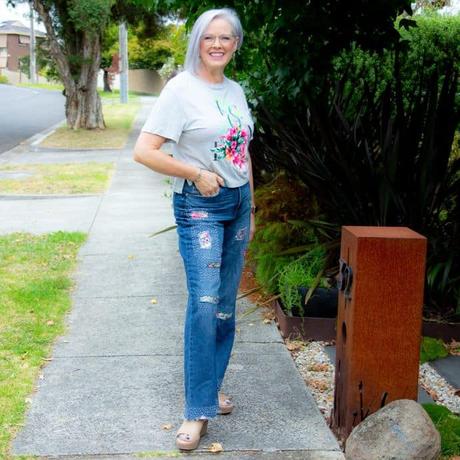
Boro is adding fabric patches to clothing to mend holes, either underneath the hole on the inside or on the outside.
Sashiko is decorative stitching used to fix the holes and hold the fabric patches in place.
After Jill Chivers shared her jeans upcycling creations that she'd been having fun creating. I decided that I'd use these traditional concepts to improve a pair of jeans that had a rip (and then I added some additional rips that I could repair, just for the fun of it).
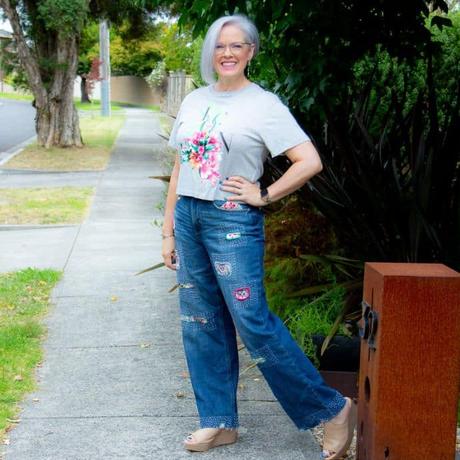
One of the things I really enjoyed about it was that it's all hand-stitched, no machine use at all. And I've found that I find this kind of hand-stitching really meditative and relaxing.
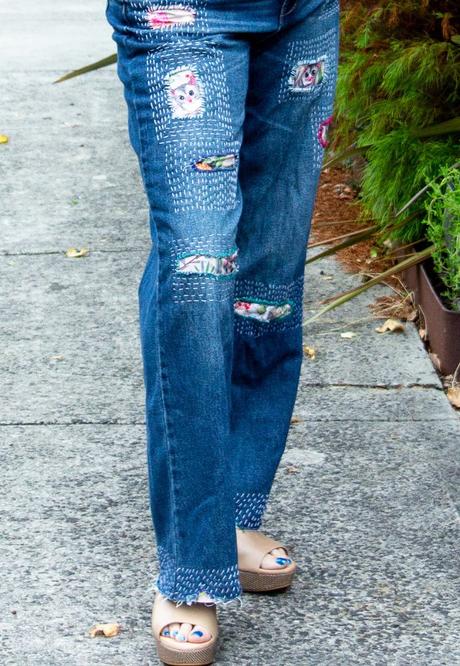
And since I have bags of fabric scraps, left over from various sewing projects over the years, it was easy to find something that would work well. It was the idea of the little possum faces peeking out of the holes that made me choose the fabric I've used.
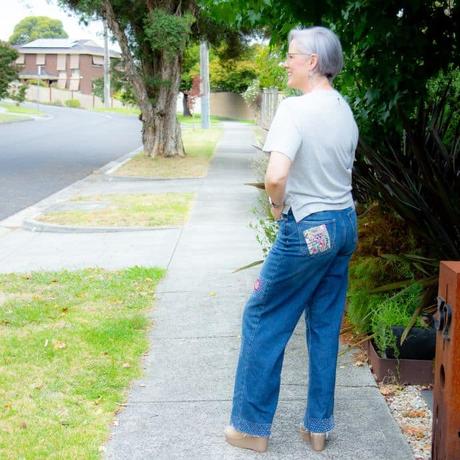
Even though there was nothing wrong with the back pockets, I decided to add a little possum patch to one of the back pockets.
Using traditional methods and a modern fashion trend (ripped jeans are everywhere, though I prefer to have my jeans less ventilated), you can create something more beautiful and original with your basic denim items that have seen better days!
So I now am the proud owner of a completely unique pair of jeans, unlike any in the world and I've saved them and the leftover fabric scraps from ending up in landfill.
